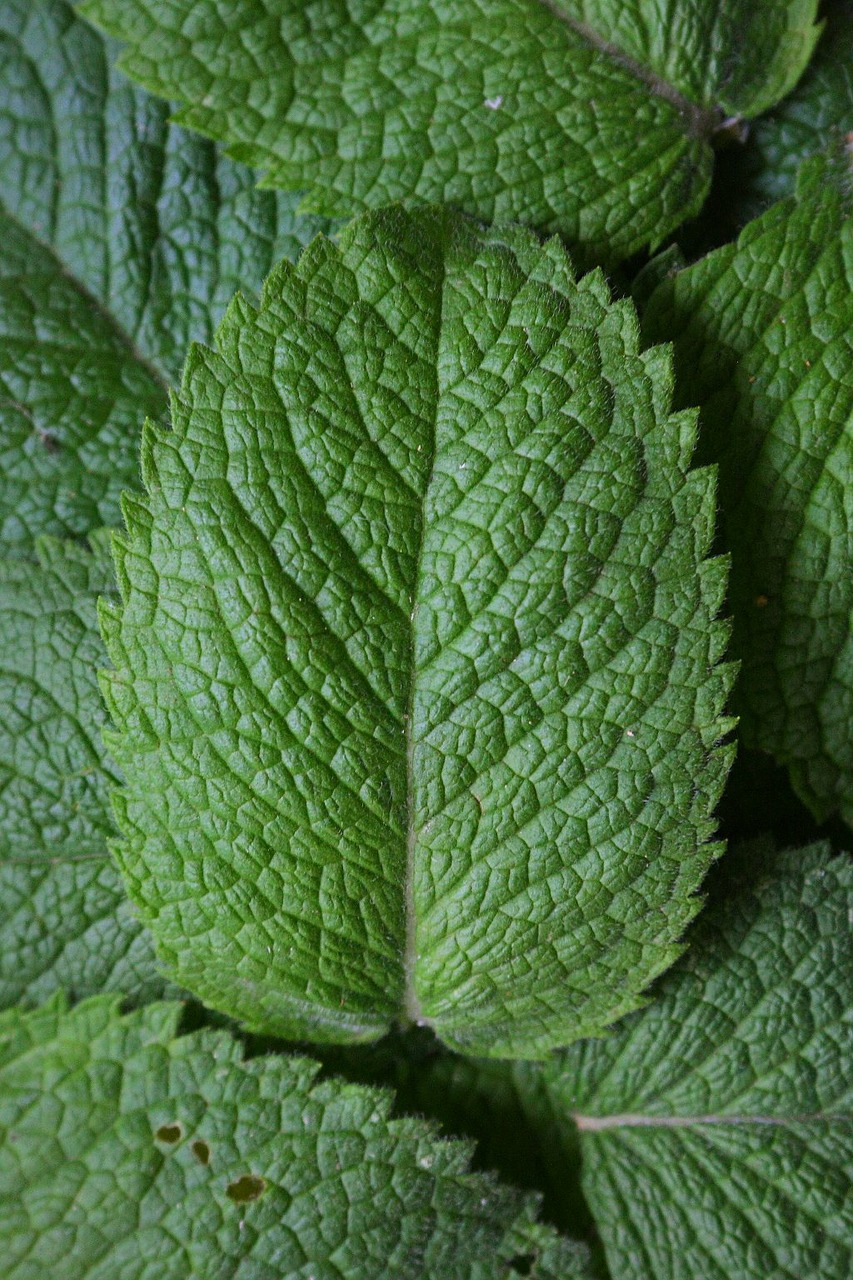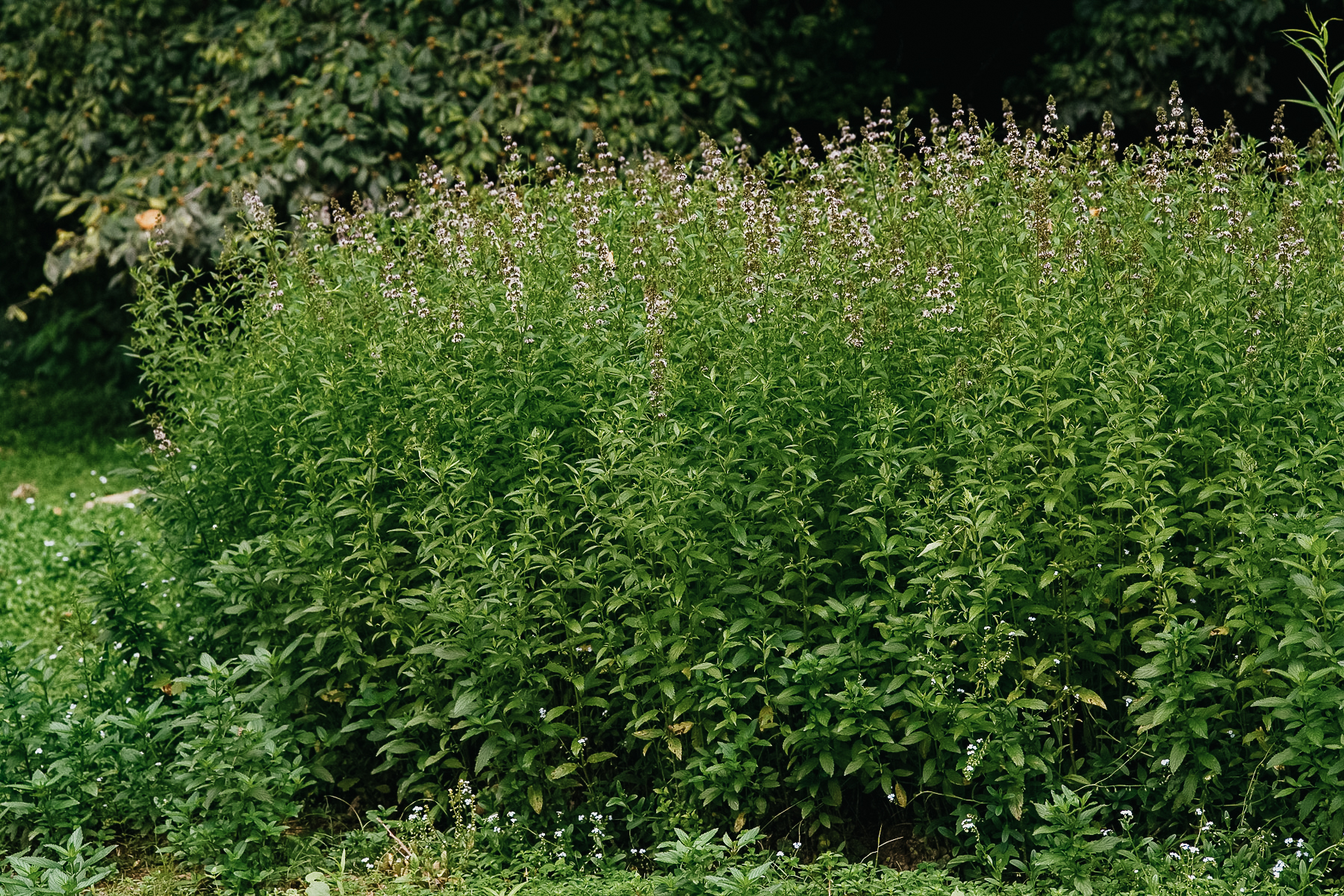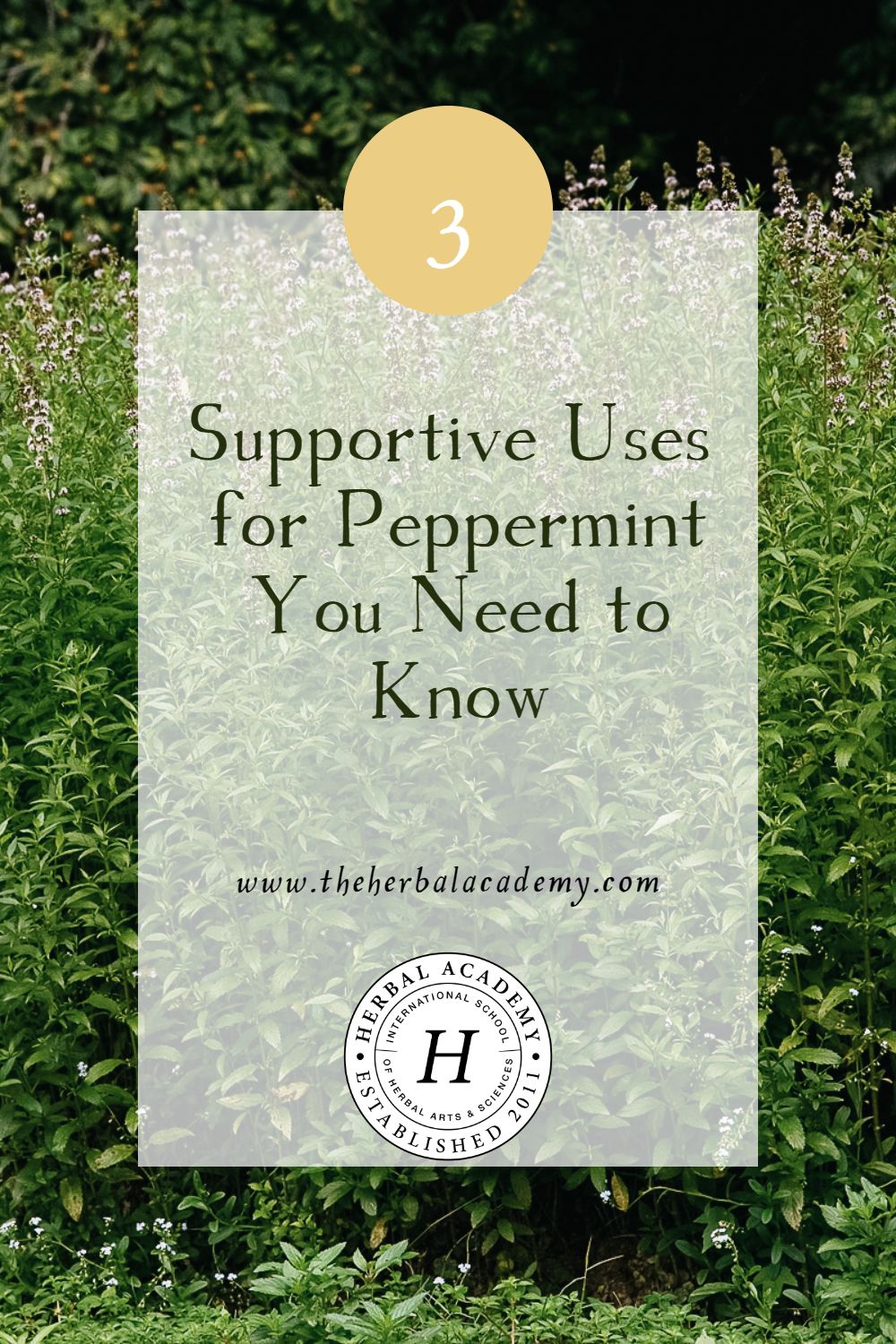
3 Supportive Uses for Peppermint You Need to Know
A cheerful mint whose flavor and aroma have inspired candy canes, chewing gum, breath mints, and holiday goodies of all sorts, the uses for peppermint (Mentha x piperita) leaf as a versatile herb with numerous botanical benefits and usages are many. With a long history among Greek, Roman, Egyptian, Chinese, and Japanese cultures, peppermint is one of the oldest herbs used in herbalism, for both its culinary and health applications. The Romans and Greeks were even known to wear crowns of peppermint at their feasts and celebrations (McIntyre, 1996; Mills & Bone, 2000).
Peppermint is a robust perennial that offers a pleasant taste and aroma, in addition to a host of wellness benefits—it has withstood the test of time as a favorite herb for cooking and herbal preparations for good reason. Let’s take a look at some of the many uses for peppermint—ways in which to enjoy, appreciate, and apply this hardy, delightful, pleasant-smelling, and delightful-tasting plant.

Energetics of Peppermint
The energetic qualities of peppermint leaf are described as spicy, bitter, and cool (Tierra, 1988), as well as sweet with an overall purifying effect (Dass, 2013). Its cool, purifying nature means that it has a tendency to increase vata dosha, so should be used cautiously with high-vata individuals and vata conditions. This would be determined if the individual and/or condition presented with excessive lightness, dryness, mobility, and/or coldness, to name a few determining factors.
Ayurvedic practitioner and author Sebastian Pole describes this phenomenon in the following manner: “[Peppermint] normalises the flow of prana vayu all over the body. By moving upwards and outwards it spreads any congested vata blocked from whatever cause…the high levels of space element present within peppermint with its expansive nature moving upwards and outwards opens the mind and lifts the ‘heaviness’ of mental and emotional tension and constriction” (2013, p. 226). Though lifting heaviness and circulating blocked energy could be very valuable in cases that involve congestion and too much earth and water energy, there is a note of caution here in high-vata situations. However, one can always add herbs with moist, nutritive qualities such as shatavari (Asparagus racemosus) to balance out the purifying, vata-aggravating effects of light, expansive herbs such as peppermint. Of course, one would also want to consider the purpose of the formulation in choosing the best herbs, in addition to bringing in opposing or balancing qualities.

Properties of Peppermint
The properties of peppermint include: diaphoretic, aromatic, carminative, calmative, mild alterative, stimulant, nervine, analgesic, and antispasmodic (Groves, 2016; Tierra, 1988). The uses of peppermint are varied in that it works on the digestive, nervous, respiratory, and circulatory systems (Dass, 2013).
How to Use Peppermint
Peppermint may be used for colds, flu, fevers, and excessive gas (Tierra, 1988); it clears the sinuses, soothes cough and headaches, and calms nausea (Groves, 2016). In addition, peppermint is useful for indigestion, cough, sore throat, headaches, cramps, and colitis (Dass, 2013). Furthermore, this cheerful, rugged little plant “invigorates the mind and spirit” (Groves, 2016, p.81).

Peppermint for Digestive Support
For soothing issues related to the upper gastrointestinal (GI) tract, such as indigestion or abdominal spasms, peppermint tea works well. On that note, after-dinner mints serve a purpose beyond refreshing the breath. Peppermint increases bile production and is an effective carminative, making peppermint tea or mints helpful in assisting and soothing digestion after a meal. A scientific study observed the effects of administering capsules containing 90 mg peppermint oil and 50 mg caraway in an enteric-coated capsule to patients experiencing non-ulcer dyspepsia (essentially, chronic indigestion without the presence of an ulcer). After 4 weeks of treatment, the peppermint and caraway capsules were shown to significantly reduce pain associated with dyspepsia in the individuals who received treatment. Pain was reduced for 89.5% of the individuals in the group taking the herbal capsules (May et al., 1996).
However, there is a note of caution that peppermint can aggravate acid reflux and heartburn-type indigestion, so would be best avoided in such cases (Groves, 2016). Compared to spearmint (Mentha spicata), which has similar properties and applications, some herbalists consider peppermint to be more stimulating and more potent in addressing digestive complaints (Frawley & Lad, 2001).
For lower GI issues, such as colitis, enteric-coated peppermint oil capsules are helpful, as the oil extracted from leaves is rich in menthol, which has an antispasmodic effect (Groves, 2016). To further underscore this observation, one study demonstrated that the application of peppermint oil using a hand pump attached to the accessory channel of the colonoscope during colonoscopy significantly reduced colonic spasm (Asao et al., 2001).

Peppermint for Respiratory Support
Menthol is a key compound in peppermint and products containing menthol are widely used for easing the feeling of nasal or airway congestion, such as the use of menthol lozenges for cough and congestion related to the common cold. Traditionally, peppermint is used as an inhalant for soothing coughs and congestion, and its diaphoretic properties may be induced to assist with sweating in the early stages of illness (Mills & Bone, 2000). One way to use peppermint as an inhalant is to incorporate the essential oil into salves and chest rubs (think of the classic Vicks VapoRub). However, you can make your own herbal vaport rub using peppermint and other essential oils. Learn how in this HA article, DIY Vapor Rub. You can also make your own herbal shower steamers using peppermint essential oil, as inspired by this HA article, How to Make Lavender Shower Steamers.
When using peppermint essential oil as a topical or inhalant, there are special cautions around the use of peppermint for children and those with asthma. You can read more about safety with peppermint and other essential oils in the HA article A Guide to Essential Oil Safety.

Peppermint for the Mood, Mind, and Headaches
Peppermint is well-known for its function in easing headaches. For this purpose, it may be diluted in ethanol solution or a carrier oil and applied to the temples or across the forehead. One scientific study demonstrated that a preparation of peppermint oil diluted in a 90% ethanol solution significantly reduced headaches in the receiving group within 15 minutes of application, and that topical use of peppermint oil may be a reasonable alternative to other headache treatments, such as acetaminophin (Gobel et al., 1996).
Peppermint may also benefit your head in other important ways. It has been shown to improve memory and alertness (Groves, 2016). Multiple scientific studies have demonstrated that peppermint enhances cognitive function and memory (Lv et al., 2022; Moss et al., 2008).
Last but certainly not least in importance, peppermint is a lovely herb for uplifting the mind and mood. You can diffuse peppermint essential oil for this purpose or incorporate it into room sprays and skincare products (just a few drops go a long way). Also, peppermint leaf is easy to incorporate into herbal infusions of all sorts. You may wish to try the simple blend described in this HA article, Supporting Creativity and Activity: Herbs for the Waxing Moon.
In Closing,
Far more than a common culinary herb, peppermint has many and varied uses. Keep dried or fresh peppermint leaves on hand for herbal tea infusions—or even simply sprinkle the leaves on salads and roasted veggies! Or whip up a batch of fresh mint cookies with dark chocolate chips like in this HA article, A Family Herb: Amazing Mint. Diffuse peppermint oil to uplift the atmosphere and to boost cognition and memory. Or, sip on peppermint tea to ease a finicky gut and to assist in healthy digestion. Lastly, try making your own herbal vapor rub and keep a tin or two handy for supporting ease of breathing when coughs and colds strike. You can even make like the Greeks and Romans and don a festive peppermint head wreath!

REFERENCES
Asao, T., Mochiki, E., Suzuki, H., Nakamura , J., Hirayama, I., Morinaga, N., Shoji, H., Shitara, Y., & Kuwano, H. (2001). An easy method for the intraluminal administration of peppermint oil before colonoscopy and its effectiveness in reducing colonic spasm. Gastrointestinal Endoscopy, 53(2), 172–177. https://doi.org/10.1067/mge.2000.108477
Dass, V. (2013). Ayurvedic herbology: East & West: A practical guide to ayurvedic herbal medicine. Lotus Press.
Frawley, D., & Lad, V. (2001). The yoga of herbs (2nd ed.): An ayurvedic guide to herbal medicine. Lotus Press.
Göbel, H., Fresenius, J., Heinze, A., Dworschak, M., & Soyka, D. (1996). Effektivität von oleum menthae piperitae und von paracetamol in der therapie des kopfschmerzes vom spannungstyp [Effectiveness of oleum menthae piperitae and paracetamol in therapy of headache of the tension type]. Der Nervenarzt, 67(8), 672–681. https://doi.org/10.1007/s001150050040
Groves, M.N. (2016). Body into balance: An herbal guide to holistic self-care. Storey Publishing.
Lv, X., Feng, Y., Ma, R., Tang, Y., Li, Y., Cui, D., & Wu, Y. (2022). Effects of peppermint essential oil on learning and memory ability in APP/PS1 transgenic mice. Molecules (Basel, Switzerland), 27(7), 2051. https://doi.org/10.3390/molecules27072051
May, B., Kuntz, H. D., Kieser, M., & Köhler, S. (1996). Efficacy of a fixed peppermint oil/caraway oil combination in non-ulcer dyspepsia. Arzneimittel-Forschung, 46(12), 1149–1153.
McIntyre, A. (1996). Flower power. Henry Holt and Company, Inc.
Mills, S., & Bone, K. (2000). Principles and practice of phytotherapy: Modern herbal medicine. Churchill Livingston.
Moss, M., Hewitt, S., Moss, L., & Wesnes, K. (2008). Modulation of cognitive performance and mood by aromas of peppermint and ylang-ylang. The International Journal of Neuroscience, 118(1), 59–77. https://doi.org/10.1080/00207450601042094
Pole, S. (2013). Ayurvedic medicine: The principles of traditional practice. Singing Dragon.
Tierra, M. (1988). Planetary herbology. Lotus Press.








